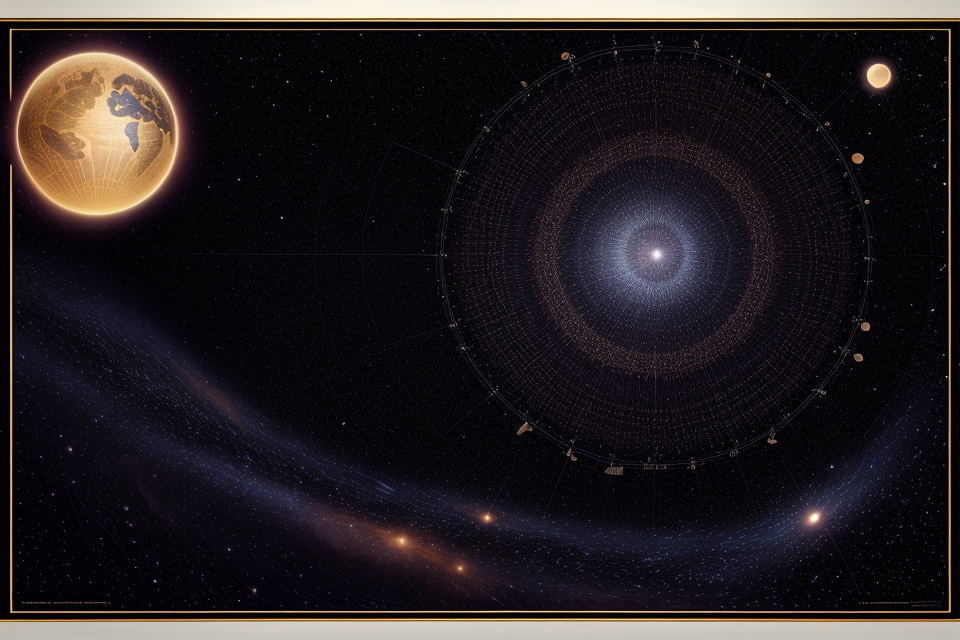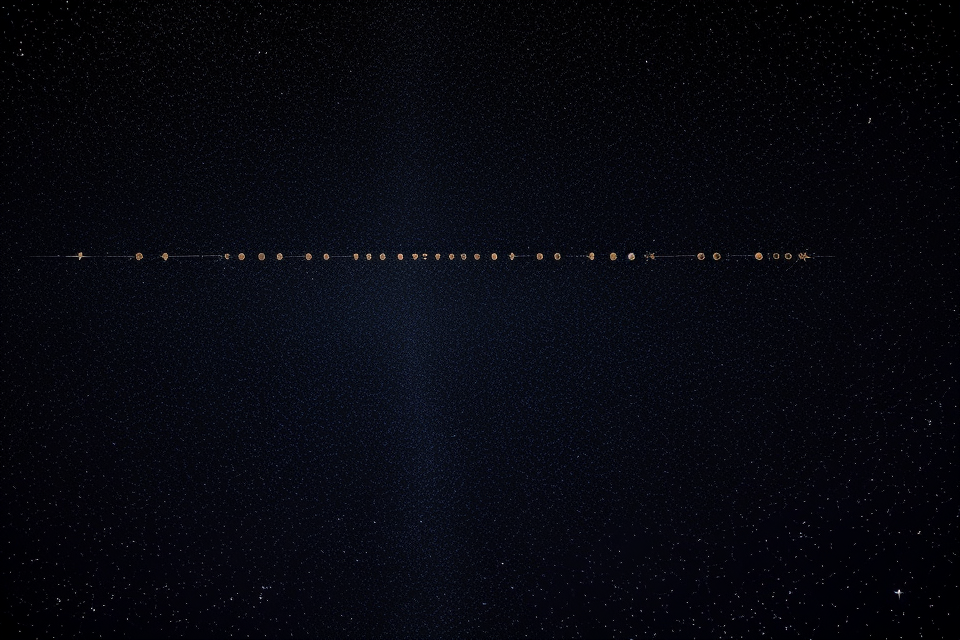Gaze up at the night sky and you’ll notice the dazzling array of stars that seem to twinkle back at you. But have you ever wondered about the patterns and constellations that these stars form? The ancient civilizations did, and they created fascinating stories and myths around these celestial wonders. One such civilization was the Kaveh, who created their own set of constellations that still captivate stargazers today. But the question remains – are Kaveh constellations worth it? In this comprehensive guide, we’ll explore the history, significance, and scientific validity of Kaveh constellations, and let you decide for yourself. So grab your telescope, and let’s embark on a journey through the night sky!
Understanding Kaveh Constellations
The Concept of Constellations
- Brief overview of constellations
Constellations are distinct areas of the night sky formed by the apparent alignment of stars in specific configurations. These groupings are named after mythological figures, creatures, or objects that they resemble.
- Importance of constellations in astronomy
Constellations have played a significant role in the study of astronomy throughout history. They have been used for navigation, seasonal calendars, and even to tell stories of myths and legends. They are also useful in locating celestial objects, such as galaxies and comets, and for mapping the movement of stars over time.
Kaveh Constellations: An Ancient Persian Legacy
Historical Background of Kaveh Constellations
Kaveh Constellations, also known as the “Asterisms of Kaveh,” are a set of constellations that have been recognized for centuries by Persian astronomers. The origin of these constellations can be traced back to the ancient Persian Empire, where the study of astronomy was highly valued.
During the Achaemenid period (550-330 BCE), the Persian Empire was home to some of the most renowned astronomers in history, such as the famous astronomer and mathematician, Anaximenes of Miletus. These astronomers observed the night sky and created the first recorded references to the Kaveh Constellations.
The Kaveh Constellations were named after the legendary hero Kaveh, who was said to have been responsible for dividing the night sky into different constellations. According to Persian mythology, Kaveh was a skilled archer who could shoot arrows through the night sky, creating the constellations as he did so.
Significance of Kaveh Constellations in Persian Culture
In Persian culture, the Kaveh Constellations hold great significance as they are believed to be symbols of good luck and fortune. These constellations are also associated with various myths and legends, making them an important part of Persian folklore.
For example, the constellation known as “The Archer” is said to represent Kaveh himself, who was believed to have the power to control the night sky. The constellation “The Chariot” is associated with the myth of the hero Rostam, who rode through the night sky in a chariot pulled by white horses.
The Kaveh Constellations have also been used for navigation purposes by sailors and travelers for centuries. Persian astronomers would use these constellations to determine the direction of the winds and the position of the sun, helping travelers to navigate through the deserts and oceans of the Persian Empire.
Overall, the Kaveh Constellations are an important part of Persian history and culture, and continue to fascinate astronomers and stargazers alike.
Evaluating the Significance of Kaveh Constellations
Astronomical Significance
Kaveh Constellations and their relation to the night sky
Kaveh Constellations are a group of celestial objects that are named after the ancient Persian mythological figure, Kaveh. These constellations are unique in that they are named after a specific character from Persian mythology, and their names are still used today in the Persian language.
Kaveh Constellations are a set of stars that form patterns in the night sky, and these patterns are used to help identify specific objects in the sky. These constellations are used for a variety of purposes, including navigation, stargazing, and astronomy.
Importance of Kaveh Constellations in stargazing and navigation
Kaveh Constellations have been used for navigation for centuries, and they continue to be used today. They are important for navigation because they help sailors and other travelers determine their location in relation to the Earth’s rotational axis. By identifying the position of the stars in the sky, sailors can determine their latitude, which is important for navigation.
Kaveh Constellations are also important for stargazing because they provide a way to identify specific objects in the sky. By identifying the position of the stars in the sky, stargazers can identify specific constellations and learn more about the objects in the sky.
Kaveh Constellations are also used in astronomy, as they provide a way to study the movement of the stars and planets in the sky. By studying the movement of the stars and planets, astronomers can learn more about the universe and the objects within it.
In conclusion, Kaveh Constellations are a set of celestial objects that are named after the ancient Persian mythological figure, Kaveh. They are important for navigation, stargazing, and astronomy, and they continue to be used today for these purposes.
Cultural Significance
Kaveh Constellations have played a significant role in Persian mythology and folklore for centuries. These celestial wonders have inspired artists, poets, and storytellers, and have been woven into the fabric of Persian culture.
The Role of Kaveh Constellations in Persian Mythology and Folklore
Kaveh Constellations have been part of Persian mythology and folklore for thousands of years. They have been used to explain natural phenomena, to mark important events in the agricultural cycle, and to tell stories about heroes and gods.
One of the most famous stories associated with Kaveh Constellations is the tale of Shahnameh, the Epic of Kings. This ancient Persian poem tells the story of the legendary king, Keyumars, and his descendants, who ruled over the land of Iran. The constellations are said to have been created by the gods to honor the brave deeds of these kings and their warriors.
Another famous story associated with Kaveh Constellations is the tale of the constellation, Orion. According to Persian mythology, Orion was a mighty hunter who was placed in the heavens by the gods as a reward for his bravery. The constellation is said to have been created in his image, and is said to have been used by the ancient Persians to navigate the seas.
How Kaveh Constellations have Influenced Art, Literature, and Tradition
Kaveh Constellations have had a profound influence on Persian art, literature, and tradition. They have been depicted in paintings, sculptures, and tapestries, and have been the subject of countless poems and stories.
Persian astronomers were among the first to study the movements of the stars and planets, and they used their knowledge of the constellations to create accurate calendars and to predict the seasons. This knowledge was passed down from generation to generation, and was used to guide farmers in their planting and harvesting.
In conclusion, Kaveh Constellations have played a significant role in Persian mythology and folklore, and have influenced Persian art, literature, and tradition for centuries. These celestial wonders continue to inspire and captivate people around the world, and will no doubt continue to do so for generations to come.
Navigating the Kaveh Constellations
Identifying Kaveh Constellations in the Sky
- How to locate Kaveh Constellations
To locate Kaveh Constellations, it is important to first identify the celestial equator, which is an imaginary line that circles the Earth at its equator. The celestial equator is the point of intersection between the celestial sphere and the Earth’s equator. It is from this point that the Kaveh Constellations can be observed.
The next step is to locate the constellations in the sky. The best time to observe the Kaveh Constellations is during the spring months, when the Earth is tilted towards the constellations. This allows for better visibility and a clearer view of the constellations.
Once the constellations have been located, it is important to use the right tools and techniques for observing them. A telescope is essential for observing the constellations, as it allows for a closer view of the stars and other celestial objects. Binoculars can also be used for a more detailed view of the constellations.
It is also important to use a star chart or a planetarium program to identify the different stars and constellations in the sky. These tools can help to identify the position of the constellations and their relative position to each other.
- Tools and techniques for observing Kaveh Constellations
There are several tools and techniques that can be used for observing Kaveh Constellations. The most important tool is a telescope, which allows for a closer view of the stars and other celestial objects. Binoculars can also be used for a more detailed view of the constellations.
A star chart or a planetarium program can also be used to identify the different stars and constellations in the sky. These tools can help to identify the position of the constellations and their relative position to each other.
It is also important to use a comfortable chair or blanket for observing the constellations, as well as warm clothing and a hot beverage to keep warm during the observation. It is also recommended to observe the constellations during the early evening or late at night, when the sky is dark and the stars are most visible.
Overall, the key to identifying Kaveh Constellations in the sky is to use the right tools and techniques, such as a telescope, binoculars, and a star chart or planetarium program. By following these steps, you can easily locate and observe the beautiful Kaveh Constellations in the sky.
The Science Behind Kaveh Constellations
- The process of mapping the stars to form constellations
- The ancient origins of constellations
- The role of constellations in early civilizations
- Mythology and religion
- Navigation and astronomy
- The role of constellations in early civilizations
- The evolution of constellations over time
- The contributions of ancient Greek and Roman astronomers
- The use of constellations for celestial navigation
- The development of star catalogs and mapping techniques
- The contributions of ancient Greek and Roman astronomers
- The modern study of constellations
- The role of technology in studying constellations
- Telescopes and other observing tools
- Computer simulations and modeling
- The role of technology in studying constellations
- The significance of the shapes and names of Kaveh Constellations
- The cultural and historical influences on the names and shapes of constellations
- The influence of mythology and religion
- The impact of cultural and scientific developments over time
- The use of constellations for celestial navigation and astronomy
- The importance of understanding the positions and movements of constellations
- The role of constellations in modern astronomy and space exploration.
- The cultural and historical influences on the names and shapes of constellations
- The ancient origins of constellations
The Future of Kaveh Constellations
Preserving Ancient Knowledge
- The importance of studying and preserving ancient astronomical knowledge
- The role of Kaveh Constellations in our understanding of the universe
- Their contribution to our knowledge of celestial phenomena
- The insights they provide into the cultural and scientific practices of ancient civilizations
- The value of preserving ancient knowledge for future generations
- The importance of maintaining a connection to our cultural heritage
- The potential for new discoveries and innovations that may arise from studying ancient knowledge
- The challenges of preserving ancient knowledge
- The fragility of ancient texts and artifacts
- The need for ongoing research and conservation efforts to protect and preserve these resources
- The role of modern technology in preserving ancient knowledge
- The use of digital archives and databases to store and share ancient texts and images
- The potential for new technologies to aid in the preservation and analysis of ancient artifacts
- The role of Kaveh Constellations in our understanding of the universe
Exploring the Unknown
- The Potential of Kaveh Constellations in Advancing Our Knowledge of Space
- Revealing the Secrets of the Universe
- Unlocking the Mysteries of the Cosmos
- Unveiling the Hidden Wonders of the Universe
- Expanding Our Horizons
- Exploring the Farthest Reaches of Space
- Delving Deeper into the Cosmos
- Advancing Our Technological Capabilities
- Developing New Technologies for Space Exploration
- Harnessing the Power of Kaveh Constellations for Innovation
- Revealing the Secrets of the Universe
- The Role of Kaveh Constellations in Future Space Exploration
- Charting New Frontiers
- Exploring New Regions of Space
- Venturing into the Uncharted Depths of the Cosmos
- Enabling Deeper Understanding
- Gaining Insights into the Origins of the Universe
- Uncovering the Secrets of the First Galaxies
- Supporting Human Space Exploration
- Providing Critical Navigation and Communication Support
- Enabling Long-Term Space Habitation and Settlement
- Charting New Frontiers
Embracing the Legacy
- Celebrating the celestial heritage
- Importance of learning from Kaveh Constellations
- Preserving the cultural significance of Kaveh Constellations
- Integrating Kaveh Constellations into modern society
The future of Kaveh Constellations lies in embracing their legacy and ensuring that their cultural and historical significance is preserved for generations to come. Despite the advancements in technology and the modernization of society, the study and appreciation of Kaveh Constellations remain relevant and valuable.
Celebrating the celestial heritage of Kaveh Constellations is an essential aspect of embracing their legacy. These constellations have been a part of human history for thousands of years, and they have played a significant role in shaping our understanding of the universe. By celebrating their heritage, we can appreciate the cultural and historical significance of these constellations and their impact on human civilization.
Moreover, it is crucial to learn from Kaveh Constellations as they provide us with a unique perspective on the universe and our place in it. Through the study of these constellations, we can gain insights into the scientific and cultural knowledge of our ancestors and their understanding of the cosmos. By learning from Kaveh Constellations, we can expand our knowledge of the universe and our place in it.
Preserving the cultural significance of Kaveh Constellations is also essential in embracing their legacy. These constellations are a part of our cultural heritage, and they represent a connection to our past and our ancestors. By preserving their cultural significance, we can ensure that their legacy continues to be celebrated and appreciated for generations to come.
Lastly, integrating Kaveh Constellations into modern society is vital in embracing their legacy. While technology has advanced, the study and appreciation of Kaveh Constellations remain relevant and valuable. By integrating these constellations into modern society, we can ensure that their cultural and historical significance is preserved while also contributing to our current understanding of the universe. This integration can be achieved through various means, such as education, public outreach, and scientific research.
In conclusion, embracing the legacy of Kaveh Constellations is crucial in ensuring their continued relevance and importance in modern society. By celebrating their heritage, learning from their knowledge, preserving their cultural significance, and integrating them into modern society, we can ensure that their legacy continues to inspire and inform future generations.
FAQs
1. What are Kaveh constellations?
Kaveh constellations are a collection of celestial bodies that form distinct patterns in the night sky. They are named after the ancient Persian astronomer, Kaveh, who is said to have discovered them over 2,500 years ago. The constellations are believed to have been used for navigation, as well as for religious and cultural purposes.
2. Are Kaveh constellations visible from Earth?
Yes, Kaveh constellations are visible from Earth, but they are not as well-known as other constellations such as Orion or the Big Dipper. This is because they are located in the southern hemisphere and are not visible from the northern hemisphere. However, with the use of telescopes or other observing equipment, it is possible to see Kaveh constellations from anywhere in the world.
3. What are the benefits of studying Kaveh constellations?
Studying Kaveh constellations can provide valuable insights into the history of astronomy and the cultural significance of celestial bodies. It can also help to improve our understanding of the universe and the patterns that exist within it. Additionally, studying Kaveh constellations can be a fun and educational activity for anyone interested in astronomy.
4. Are Kaveh constellations useful for navigation?
Yes, Kaveh constellations were used for navigation by ancient sailors and explorers. They were used to help determine direction and location, as well as to track the passage of time. While modern technology has made traditional navigation methods less necessary, studying Kaveh constellations can still be a useful way to understand the patterns and movements of celestial bodies.
5. How can I learn more about Kaveh constellations?
There are many resources available for learning about Kaveh constellations, including books, online articles, and educational resources. Many museums and planetariums also offer programs and events focused on astronomy and the night sky. Joining a local astronomy club or attending a stargazing event can also be a great way to learn more about Kaveh constellations and other celestial wonders.



